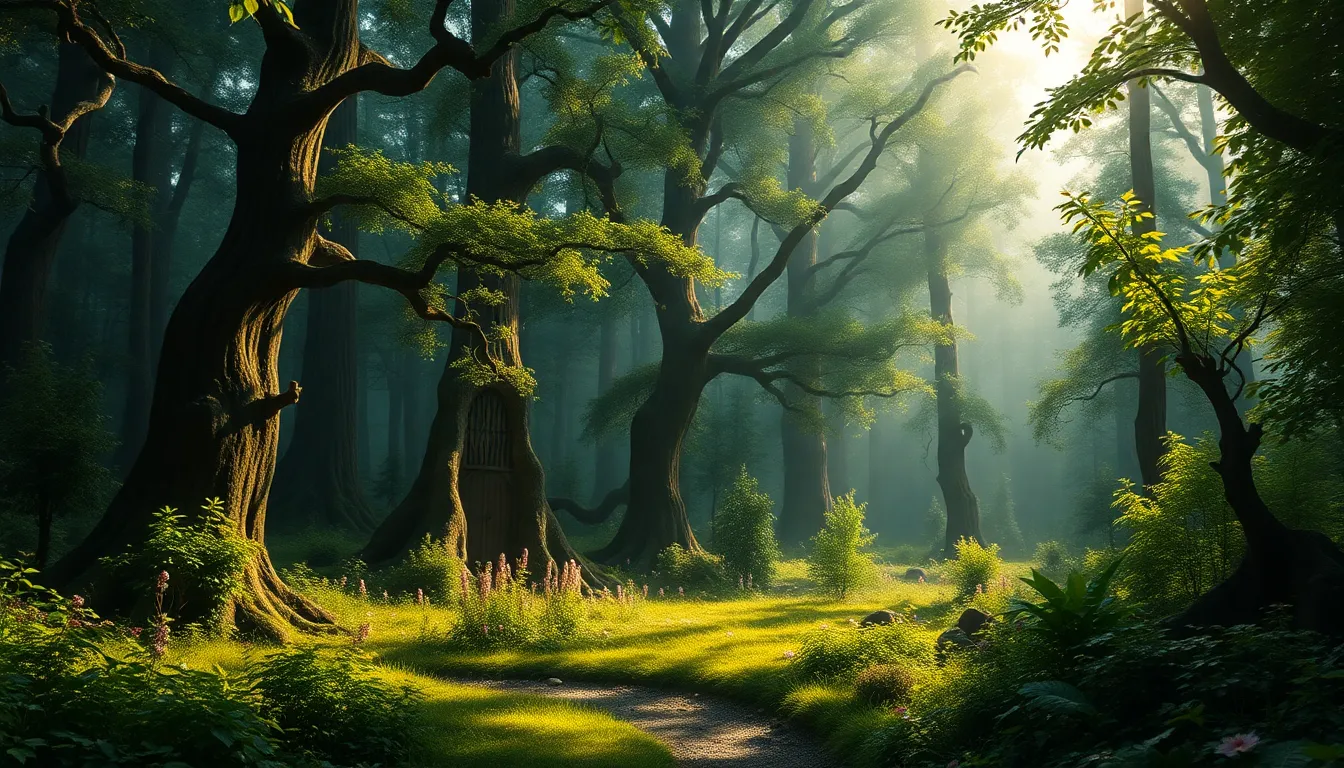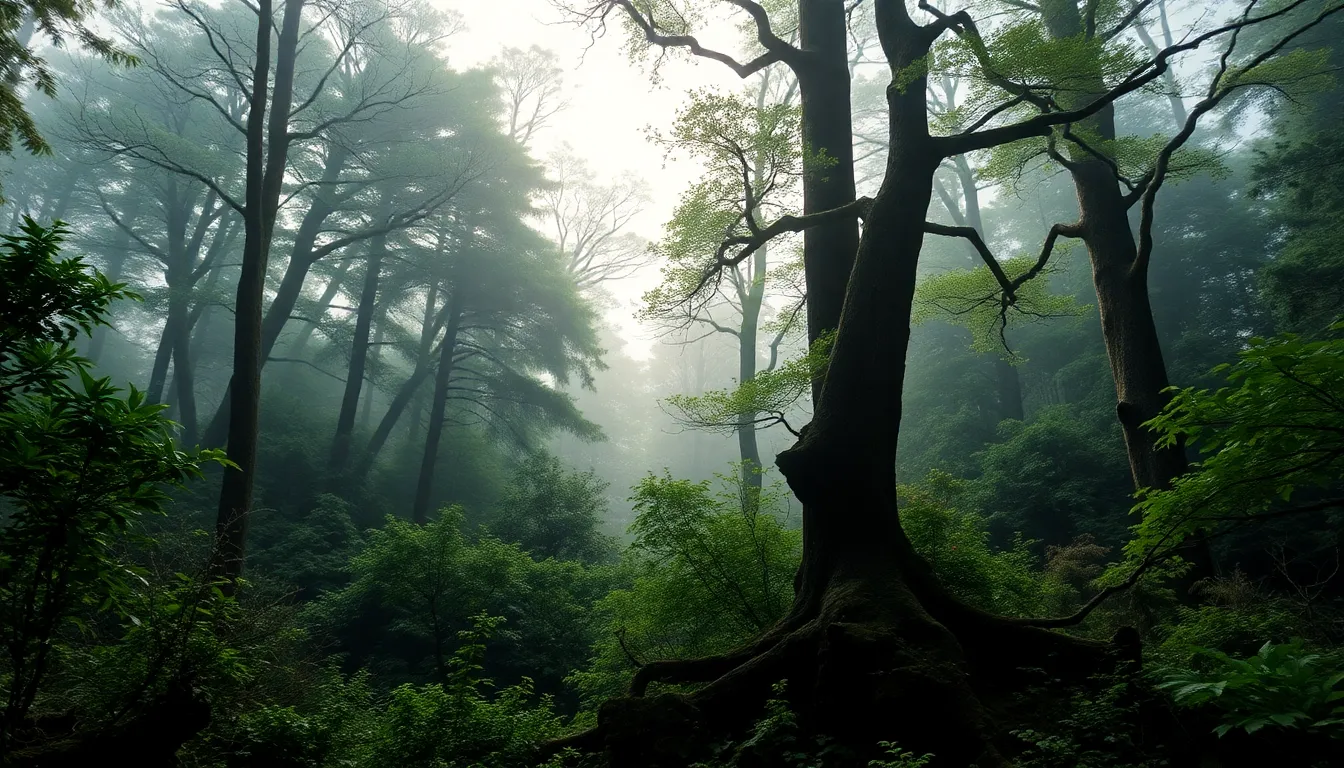The Enchanted Forest: A Sanctuary for the Imagination
I. Introduction to the Enchanted Forest
The enchanted forest, a term that evokes images of magical beings and whimsical landscapes, represents more than just a physical space; it embodies a realm where imagination thrives. Defined as a mystical woodland filled with extraordinary happenings, these forests serve as a backdrop for countless tales of wonder and adventure.
Throughout history, enchanted forests have held significant roles in folklore and mythology, often depicted as places where the ordinary meets the extraordinary. They serve as sanctuaries for mythical creatures, lost souls, and brave adventurers, fostering a deep connection between nature and human creativity.
This article aims to explore the profound impact enchanted forests have on our imagination, delving into their historical context, characteristics, psychological effects, and representation in popular culture.
II. The Historical Context of Enchanted Forests
The concept of enchanted forests dates back to ancient cultures, where they were often viewed as sacred spaces imbued with spiritual significance. In many traditions, these forests symbolize the unknown, serving as thresholds between the mundane and the magical.
In classic literature and fairy tales, enchanted forests play pivotal roles. They are often settings for transformative journeys, where characters encounter challenges that lead to personal growth. From the Brothers Grimm to Aesop, these narratives highlight the forests’ dual nature—both enchanting and perilous.
As time progressed, the portrayal of enchanted forests evolved. The Romantic era, for instance, celebrated nature’s beauty and mystery, further embedding enchanted forests into the cultural psyche as places of inspiration and reflection.
III. Characteristics of Enchanted Forests
Enchanted forests are characterized by their unique flora and fauna, which evoke a sense of magic and wonder. Common features include:
- Unique Flora: Trees with gnarled branches, vibrant flowers, and ancient plants often populate these forests.
- Rare Fauna: Mythical creatures such as fairies, elves, and talking animals frequently inhabit these enchanted realms.
Natural features such as meandering streams, rolling hills, and hidden groves contribute to the overall mystique. The interplay of light and shadow, created by dense canopies and dappled sunlight, enhances the magical ambiance, inviting exploration and discovery.
IV. The Psychological Impact of Enchanted Forests
Enchanted forests have a profound psychological impact, inspiring creativity and imagination in those who wander through them. Studies have shown that nature can boost cognitive function, leading to enhanced problem-solving abilities and creativity.
Moreover, spending time in nature has therapeutic benefits. It can reduce stress, improve mood, and foster a sense of connection to the world. The beauty and tranquility of enchanted forests provide a much-needed escape from the chaos of modern life.
As a source of wonder and escapism, enchanted forests allow individuals to transcend reality, encouraging daydreaming and imaginative play, particularly in children but also in adults seeking inspiration.
V. Enchanted Forests in Popular Culture
Enchanted forests have been prominently featured in various forms of popular culture, shaping narratives in films, books, and video games. Notable examples include:
- “The Lord of the Rings”: The forests of Middle-earth, like Lothlórien, serve as mystical sanctuaries filled with ancient wisdom.
- “Pan’s Labyrinth”: The dark, enchanting woods serve as a portal to a fantastical world, rich with symbolism and allegory.
- “The Secret of NIMH”: The forest represents both danger and sanctuary, reflecting the struggles of its characters.
These representations highlight the influence of enchanted forests on modern storytelling, serving as metaphors for adventure, danger, and discovery.
VI. Enchanted Forests as Inspiration for Artists and Writers
Writers often utilize enchanted forests to develop narratives that captivate readers. These settings provide a rich backdrop for character development and thematic exploration, allowing for the intersection of reality and fantasy.
Artists, too, draw inspiration from enchanted forests, creating stunning interpretations through various mediums:
- Paintings: Many artists capture the ethereal beauty of enchanted forests in their landscapes.
- Sculptures: Artists sculpt mythical creatures and natural forms that reflect the magic of these forests.
- Installations: Immersive art experiences often mimic the enchanting qualities of these forests, inviting audiences to engage with nature.
The role of nature in the creative process cannot be overstated; it ignites inspiration and fosters a deeper connection to the world around us.
VII. Real-Life Enchanted Forests Around the World
Several real-life locations embody the enchanting qualities of mythical forests. Notable examples include:
- The Black Forest (Germany): Known for its dense woodlands and fairy-tale charm, this region is steeped in folklore.
- Aokigahara (Japan): Also known as the Sea of Trees, this forest is famous for its eerie beauty and rich mythology.
- The Forest of Dean (England): This ancient woodland is filled with legends and offers a glimpse into a magical past.
These forests possess unique features and myths that contribute to their allure. Ecotourism plays a vital role in their preservation, ensuring future generations can experience their magic.
VIII. Creating Your Own Enchanted Forest Experience
While not everyone has access to a famous enchanted forest, it is possible to cultivate a sense of magic in local parks or gardens. Here are some tips:
- Plant Native Flora: Incorporate plants that evoke a sense of wonder and beauty.
- Design Hidden Spaces: Create nooks and crannies that invite exploration.
- Incorporate Art: Use sculptures or natural materials to enhance the magical atmosphere.
Activities such as storytelling, art, and community events can further enhance the enchanted experience. Engaging with others fosters a deeper connection with nature and encourages imaginative exploration.
IX. The Future of Enchanted Forests
As environmental challenges continue to threaten natural landscapes, the future of enchanted forests hangs in the balance. Deforestation, climate change, and pollution jeopardize these magical spaces, making conservation efforts crucial.
Promoting sustainable practices and raising awareness about the importance of these ecosystems can help protect them for future generations. Enchanted forests serve as metaphors for the future of imagination, reminding us of the beauty and wonder that exist in the natural world.
X. Conclusion
The enchanted forest stands as a testament to the power of imagination and the deep connections we share with nature. From ancient myths to modern storytelling, these magical landscapes inspire creativity, reflection, and a sense of wonder.
As we navigate the challenges of the future, it is essential to preserve these enchanting spaces, ensuring they continue to ignite our imaginations and nurture our spirits for generations to come.



